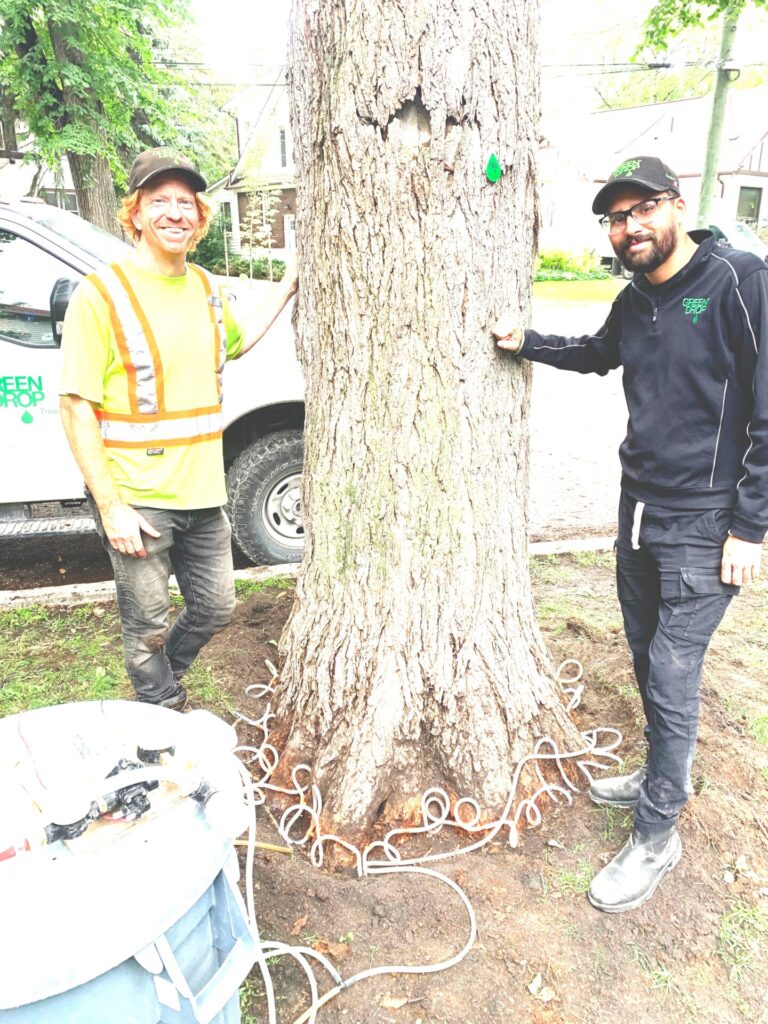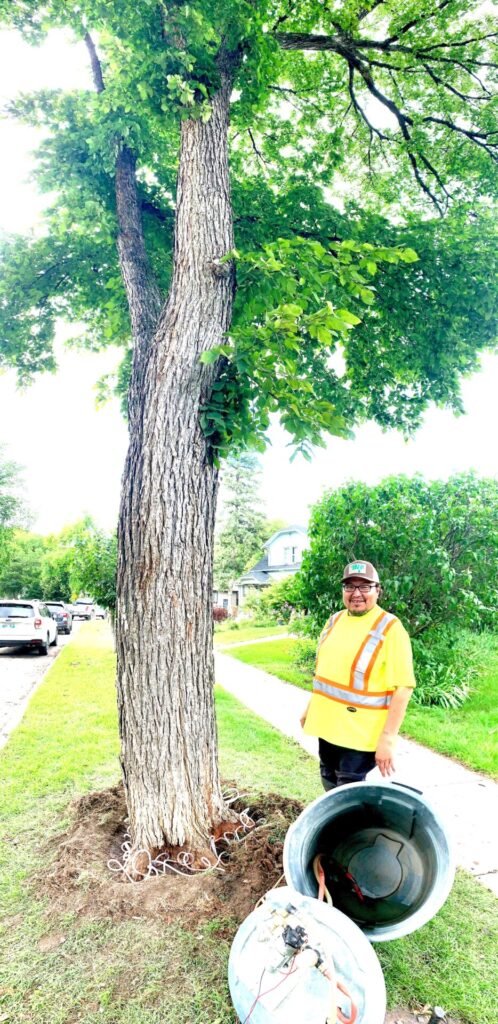
The Wolseley Residents Association (WRA) raised $25,000 this summer to innoculate 55 elm trees along Wolseley Ave., from Ruby Street to Basswood Street, giving that stretch of the neighourhood three years relief from the Dutch elm disease that is steadily killing the rest of Wolseley’s elms.
Pat McCarthy-Briggs, of the WRA’s tree committee, said inoculating the 55 trees is the first step in trying to preserve some part of Wolseley’s iconic canopy. “For as long as any of us lived, these beautiful trees have been a daily part of our lives,” she explained. “But now it’s expected we’ll lose all of the elms in the next ten-or-so years. We’re trying to save enough of the big old trees to preserve some of the character of the neighbourhood. It’s good to know this stretch of Wolseley is protected now.”
During June and July the tree committee ran a campaign that raised $20,000 in donations from Wolseley residents. “We’re so grateful to those residents, and to Assiniboine Credit Union for their $5,000 donation,” said McCarthy-Briggs. “We’re also thankful to Green Drop Tree Care, which has provided generous support.”
Simon Peacock is the arborist from Green Drop who supervised the inoculation program along Wolseley Avenue in the last two weeks of August. He gave The Leaf a primer on Dutch elm disease (DED) and the fungicide injections that can prevent it.
Beetles carrying the fungus are attracted to dead elm branches. As they munch on the wood, the fungus they carry on their bodies enters the vascular system of the tree (specifically the xylem: the system of cells that carries water up from the roots to the leaves). The fungus also enters the xylem when the beetles drill into the trunk to deposit eggs. The fungus can also enter the tree if its roots connect with an elm that already has been infected.
Once the fungus is in the xylem, the tree produces blockages in the xylem to prevent the fungus from spreading. But these blockages restrict water and nutrient flow to the crown of the tree, and it dies.

The attraction of the beetle to dead elm is why the response of many cities over the years has been rapid identification of infected trees, cutting them down, and disposing of them. Winnipeg, which has the largest elm canopy remaining in North America, follows this policy of cutting down and replanting new species.
However the process now being followed for the 55 trees on Wolseley is not cleaning up dead trees – it’s preventing their death in the first place. The fungicide solution being used –Arbotect 20-S– will kill the fungus when it inevitably arrives, and will prevent the tree from forming blockages.
The first step in prevention is identifying that the elm is healthy and is far away from root contact with a diseased tree. Tubes carrying the fungicide solution are injected all around the base of the trunk. It takes up to 12 hours (depending on the size of the tree) for the liquid fungicide to be pumped into the tree’s xylem, which carries it up the trunk and branches. With the fungicide in the tree’s vascular system, it will kill the fungus carried aboveground by the beetles (but not the fungus if it is infecting the root system through contact with a nearby infected tree).
The process is expensive: three years protection for $700 to $1,200 a tree, depending on size. The cost of totally removing a dead tree is $2,500-3,000, explained Peacock.
McCarthy-Briggs hopes that a second phase of their fund-raising in the fall, aimed at Wolseley businesses, will raise more funds to protect more trees next year.

